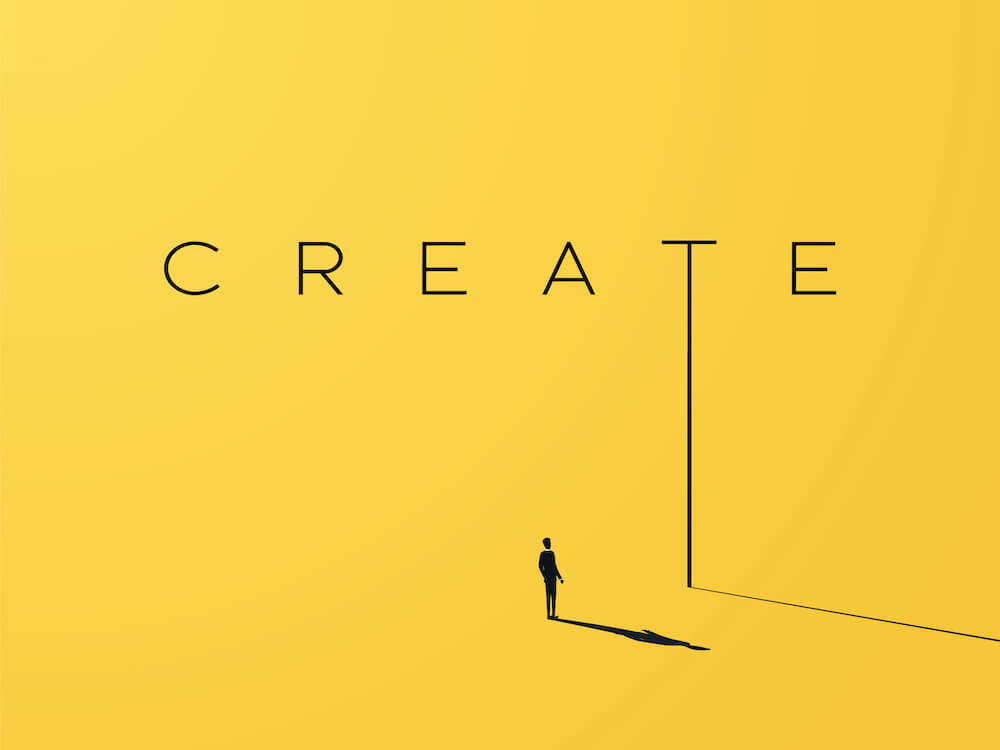
Your Partner in Software Development Outsourcing & Consulting
Building Software Solutions that Drive Business Success
At DVORAI AI, we combine technical expertise with strategic insight to deliver custom software development solutions. Whether you're looking to outsource your development projects or seeking expert consulting to optimize your processes, we're here to help you achieve your goals efficiently and effectively.
Experienced Team
Our developers, consultants, and project managers bring years of expertise and innovation to every project.
Cost Efficiency
Maximize ROI with high-quality development and consulting services at competitive rates.
Scalability & Flexibility
From startups to enterprises, our solutions grow with your business.
Consultation & Discovery
Understand your business challenges and goals.
Strategic Planning
Develop a roadmap for development or process optimization.
Design & Development
Build innovative, user-friendly software solutions tailored to your needs.
Testing & Deployment
Ensure flawless performance before launch.
Consultant (Junior)
Entry-level professional who combines software development expertise with a consulting role.
Consultant (Senior)
Experienced professional who leads software development projects.
Developer (Junior, Full-time)
Entry-level professional who combines software development expertise with a consulting role.
Developer (Mid-level, Full-time)
Experienced professional with moderate experience.
Developer (Senior, Full-time)
Experienced professional who leads software development projects.
Graphic Designer (Full-time)
Combining art and technology to design visual content for various media, both digital and print.
Project Manager (Full-time)
Implementing important plans and managing teams
QA Tester (Full-time)
Ensuring that software applicationss meet specified quality standards.
Software Development Outsourcing
Software Development Outsourcing: Delegate your software development needs to a team of experts and focus on what you do best.
API Development & Integration
API Development & Integration: Seamlessly connect your software ecosystem with custom APIs.
Quality Assurance & Testing
Quality Assurance & Testing: Ensure flawless performance with rigorous testing services.
Consulting Services
Consulting Services: Navigate the complexities of software development with expert guidance.
Technology Strategy Consulting
Technology Strategy Consulting: Identify the best technologies to align with your business goals.
Architecture & Design Consulting
Architecture & Design Consulting: Build scalable, secure, and efficient software systems.
Process Optimization
Process Optimization: Improve development workflows for faster, more cost-effective delivery.
Cloud & DevOps Consulting
Cloud & DevOps Consulting: Modernize infrastructure and automate deployment for efficiency.
Data Analytics & AI Consulting
Leverage data-driven insights and AI for smarter decision-making.
Outsourcing Pricing Model
Creating a pricing model for consulting and outsourcing of software development involves understanding the different types of services provided, the scope of engagement, and the relationship between the client and the service provider. Consulting typically involves strategic guidance, project management, and technology expertise, while outsourcing focuses on the execution of the development work itself.
Here's a detailed breakdown of the pricing models commonly used for consulting and outsourcing of software development:
1. Hourly or Daily Rate Model
In this model, the client is billed for the time the consultant or outsourcing team spends on the project. The rates can vary depending on the expertise of the consultant, the geographical location of the team, and the nature of the work being done.
Key Components:
- Hourly or Daily Rates: Charge based on the time spent on the project.
- Project Duration: Can be short-term or long-term, depending on the client’s needs.
- Flexibility: Ideal for ad-hoc consulting or outsourcing that requires flexibility in terms of scope.
Ideal for:
- Clients seeking specific expertise for a short duration.
- Projects with evolving or unclear requirements.
- Advisory or support work, where the scope can change.
Example Pricing:
- Consultant (Junior): $50 - $150 per hour
- Consultant (Senior): $150 - $300 per hour
- Outsourced Developer (Junior): $25 - $75 per hour
- Outsourced Developer (Senior): $75 - $150 per hour
- Project Manager: $100 - $200 per hour
2. Fixed Price Project Model
The fixed-price model is common for consulting and outsourcing projects with clearly defined scope and objectives. The client agrees to a set price for the entire project, and the vendor delivers the project within the agreed-upon timeline.
Key Components:
- Clearly Defined Scope: Both parties agree on the scope of the project, deliverables, and timeline.
- Payment Milestones: Payments are often tied to project milestones or deliverables.
- Risk for Vendor: The vendor assumes the risk of completing the project within the fixed price.
Ideal for:
- Well-defined, predictable projects.
- Clients who need a clear budget for the entire project.
Example Pricing:
- Small Project (1–2 months): $10,000 - $50,000
- Medium Project (3–6 months): $50,000 - $150,000
- Large Project (6+ months): $150,000 - $500,000+
3. Time and Materials (T&M) Model
In a T&M model, the client pays for the actual time spent on the project (usually by developers, consultants, and other team members) and the materials or resources used. This is often used in outsourcing when the scope is unclear, or the project is expected to evolve over time.
Key Components:
- Hourly Rates for Services: Charges based on the time spent by consultants, developers, and other resources.
- Transparency: Clients have visibility into hours worked and resources utilized.
- Flexibility: Clients can adjust scope or change requirements as the project progresses.
Ideal for:
- Long-term projects with uncertain or evolving requirements.
- Ongoing consulting and development work with changing needs.
Example Pricing:
- Consultant (Junior): $50 - $150 per hour
- Consultant (Senior): $150 - $300 per hour
- Outsourced Developer (Junior): $25 - $75 per hour
- Outsourced Developer (Senior): $75 - $150 per hour
- Project Manager: $100 - $200 per hour
4. Dedicated Team Model
The dedicated team model is commonly used for outsourcing where the client hires a full team (including developers, designers, QA testers, and project managers) to work exclusively on their project. The client pays a monthly or quarterly fee for access to the team.
Key Components:
- Full Team of Experts: The client has a dedicated group of professionals working on the project.
- Monthly Payment: Typically billed monthly for the team’s time and resources.
- Long-Term Engagement: Common for ongoing projects or product development.
Ideal for:
- Large projects requiring ongoing development and support.
- Clients who need dedicated resources for continuous work.
- Companies that prefer to scale resources as needed.
Example Pricing:
- Dedicated Developer (Full-time): $3,000 - $10,000 per month
- Project Manager (Full-time): $5,000 - $12,000 per month
- QA Tester (Full-time): $2,500 - $7,000 per month
- UX/UI Designer (Full-time): $3,000 - $8,000 per month
5. Retainer Model
In a retainer model, the client pays a recurring monthly fee to secure ongoing access to a consultant or a team of consultants. This model is useful for clients needing continuous advisory support or long-term outsourcing without the need to define the scope of each engagement.
Key Components:
- Ongoing Support: The client pays a fixed monthly fee for ongoing consulting services or development support.
- Flexible Scope: The consultant or outsourcing team can handle multiple tasks or projects as they arise.
- Predictable Revenue: The provider gets stable monthly income, and the client has predictable costs.
Ideal for:
- Clients who need ongoing advisory or development support.
- Long-term outsourcing arrangements.
Example Pricing:
- Consultant (Part-time Retainer): $2,000 - $10,000 per month
- Consultant (Full-time Retainer): $10,000 - $30,000 per month
- Outsourced Team (Retainer): $15,000 - $50,000 per month (for a team of 5-10 developers)
- Project Manager (Retainer): $5,000 - $15,000 per month
6. Performance-Based Pricing Model
In this model, payment is based on the results or performance of the project. This is often used in consulting engagements where the consultant’s fees are tied to achieving specific business outcomes, such as revenue growth, cost savings, or improved efficiency.
Key Components:
- Outcome-Based Fees: The consultant or outsourcing provider is paid based on specific, measurable results or KPIs.
- Risk/Reward Sharing: The consultant assumes more risk by only being paid for results but stands to earn more if goals are met.
Ideal for:
- Projects where the value or outcome can be directly measured.
- Clients who want to ensure high ROI before making significant payments.
Example Pricing:
- Consulting Fees (Performance-Based): 5-20% of the business outcome, such as revenue increase or cost savings.
- Outsourcing Fees (Performance-Based): A base fee plus a bonus for meeting specific KPIs (e.g., completion time, performance improvements, etc.).
7. Subscription-Based Model
For ongoing services like software maintenance, updates, and optimization, a subscription-based model is often used. The client pays a fixed monthly or yearly fee for continuous support and updates.
Key Components:
- Ongoing Maintenance: Provides ongoing support, bug fixes, and software improvements.
- Fixed Recurring Fees: Clients pay on a subscription basis, often monthly or annually.
- Access to Updates and Support: Clients have access to continuous updates, customer support, and optimizations.
Ideal for:
- Long-term software maintenance and support.
- SaaS platforms or applications requiring regular updates.
Example Pricing:
- Basic Subscription (for Small Projects): $500 - $2,000 per month
- Advanced Subscription (for Larger Projects or SaaS): $5,000 - $20,000 per month
- Enterprise Support Subscription: $20,000 - $100,000+ per year
8. Hybrid Model
The hybrid model combines several pricing methods, such as fixed-price for initial phases (like planning or discovery) and T&M for ongoing development or changes. This allows for flexibility while still keeping certain phases predictable.
Key Components:
- Fixed-Price for Defined Phases: For the initial setup, planning, or discovery phase.
- T&M for Ongoing Development: Charges based on actual time and materials for the remaining phases.
- Milestones and Flexibility: Clear milestones are agreed upon, but the client can adapt as the project progresses.
Ideal for:
- Projects that evolve over time but have clear phases or milestones.
- Long-term engagements with specific deliverables at various stages.
Example Pricing:
- Discovery/Planning (Fixed Price): $5,000 - $25,000
- Development (T&M): $50 - $200 per hour
- Ongoing Maintenance (Subscription or Retainer): $1,000 - $20,000 per month
Conclusion
The choice of pricing model for consulting and outsourcing software development largely depends on the scope, complexity, and duration of the project, as well as the client's preference for flexibility or predictability in costs. Here's a quick guide:
- Fixed Price: Best for well-defined, predictable projects.
- Hourly/Day Rate or T&M: Ideal for flexible, evolving projects.
- Dedicated Team: Suitable for long-term or large-scale projects.
- Retainer: Great for ongoing support or continuous consulting.
- Performance-Based: Best for outcome-focused engagements.
- Subscription-Based: Suitable for ongoing maintenance or SaaS offerings.
- Hybrid: Combines fixed price and T&M for flexibility and predictability.
A suitable pricing model can be tailored to ensure both the company and you will be aligned on expectations and deliverables.

